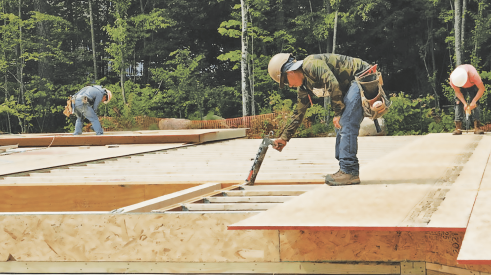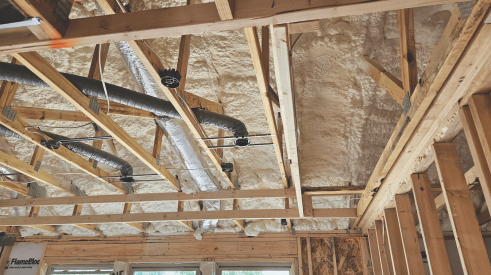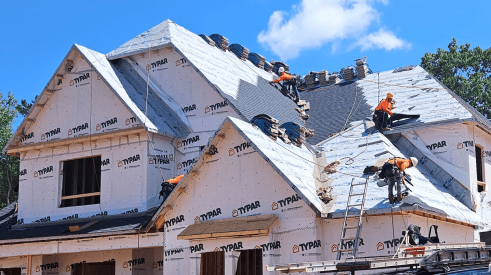The need to onboard new trades is a reality in the residential construction business. Perhaps you’ve grown tired of trades that raise their prices as much and as often as they can. You have repeatedly seen how they take a material or labor increase and apply additional fixed overhead and margin to increase their profits while compressing yours; yet when material prices come down, the additional overhead and markup they applied doesn’t decrease. Or maybe you have trades that have no desire to grow their business to keep pace with yours. Or a trade that plans to retire without any succession plan for the business. Perhaps it’s simply that you are opening a new community in an area some of your existing trades don’t cover. Whatever the reason, bringing on new trade capacity is a must in this labor-constrained, inflationary market. As a builder, you need a backup in each trade category to protect your business from disruption.
Onboarding new trades requires a well-thought-out process. You can’t just expect trades to show up at the jobsite and be successful. I’ve seen builder after builder do just that and then wonder why the new trade failed. Follow these five steps to improve the probability of a new trade’s success.
1| Make sure construction documents are kept up to date.
This includes construction plans, architectural details, scope of work specifications, schedule templates, and purchase orders. Review these documents with the trade before they start work. Let them know they should bring any discrepancies to your attention. While a long-term trade may be able to overcome your shortcomings through tribal knowledge, a new trade will only know what you or your construction documents communicate to them. If a new trade is struggling, look first to see if you have done everything you can to help them succeed before you assume they are not capable.
2| Develop a new-trade onboarding packet.
Work with your cross-functional departments—Construction, Safety, Purchasing, Accounts Payable, Risk Management, etc.—to build the packet. Include details about what minimum safety gear (hard hat, vest, etc.) is required on the jobsite, where the construction entrance to the community is located and any traffic restrictions, where to park on the site, how the schedules will be communicated, how change orders will be processed, what will be needed from the trade for timely payment of completed work, how the certificate of insurance update process works, etc. Essentially, you should include everything your seasoned trades already know about working with your company. Also, include your existing trades in the process to make sure you didn’t miss anything; they have a vested interest in the success of a new trade. The new trade’s failure can affect their schedule or cause them rework.
3| Align the organizations.
Identify key members of the trade’s management team and introduce them to yours. They will need to know who does your production scheduling and you will need to know who does theirs. Identify who orders the materials for your jobsite and who is responsible for bidding new work, billing completed work, training the crews that will be on your jobsite, processing change orders, etc. Share with them the contact information for people in your organization with whom they would interact for normal business questions. For example, who would the trade contact with a billing question or for clarification of a change order.
4| Utilize the supplier and manufacturer resources available to you.
Suppliers and manufacturers have a vested interest in making sure builders’ jobsites run efficiently and materials are properly installed. Many manufacturers offer training seminars to teach proper installation, while others delegate this important task to their distributors.
Develop a list of training resources for each trade category, call your local representative to see when the next training workshop will occur in your area and encourage the new trade to participate. Even if the trade has done it in the past, check to see whether each crew member who will be working on your jobsite has taken the training. If they haven’t, encourage them to do so. Ask your local manufacturer’s rep to visit the jobsite while your new trade is performing their scope of work. Ask that the rep observe the trade’s installation methods and be available for any questions. Encourage the reps to bring coffee and donuts in the morning or pizza for lunch. By doing so, reps will be better received.
5| Implement a three-house rule.
Timely feedback is critical to any new trade’s success. Before the actual crew starts on the jobsite for the first time, there will be some things you want to review with them, such as their safety plan, scopes of work, material specifications, and so on, as well as jobsite safety rules specific to your company.
Let the trade know that the construction superintendent will work diligently to be available to them as they work on their first three homes. The super should provide timely feedback as the trade performs work in the first house, identifying areas in which they did particularly well and any area that needs corrective action. By also including things they did well, the trade will be more receptive to feedback on things that need improvement. This feedback should come throughout the workday but no later than the completion of the first house. Correcting any potential errors is always easier before you have multiple homes under construction with the defect. Follow the same process for houses two and three. By the time the trade finishes the third home, they will have a good understanding of your requirements and you’ll have an assurance of the trade’s capability to meet them.
Many new trades aren’t primed for success. As a result, the quality of their work is less than expected, they complete their scope of work late, or they need to increase prices to make up for rework on their first assignment, rendering them uncompetitive. In any of these cases, the trade has failed. This is very rarely 100 percent their fault. Following the practical steps above can help them succeed and will show trades that you’re committed to their success—and yours.
Advertisement
Related Stories
Quality Matters
5 Ways to Silence Squeaky Floors
Take these tips to heart to deliver quiet floors and satisfied homeowners
Quality Matters
Tips for Placing HVAC Ducts in Conditioned Space
See how putting HVAC ducts inside conditioned space in a home benefits both the builder and the homeowner
Quality Matters
Don't Underestimate the Importance of Roofing Underlayment
Regardless of which product you choose to use, installing a roofing underlayment will help ensure the roof system withstands the elements and the home stays dry








